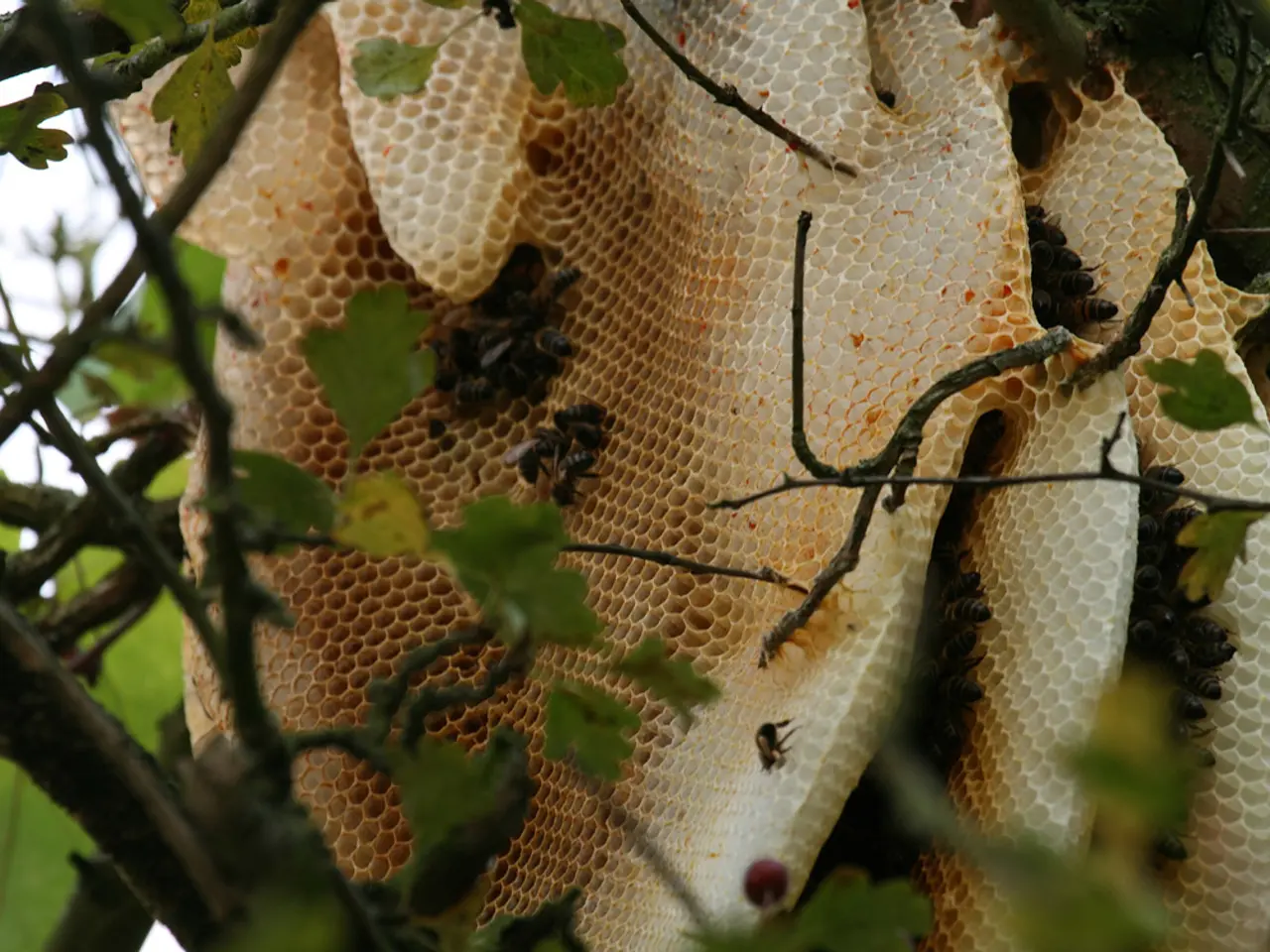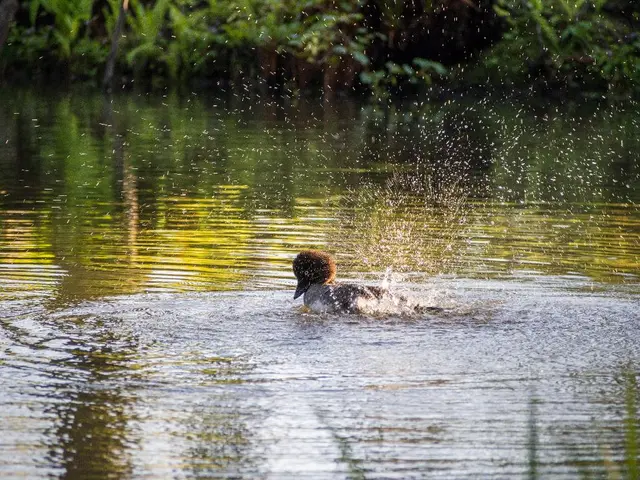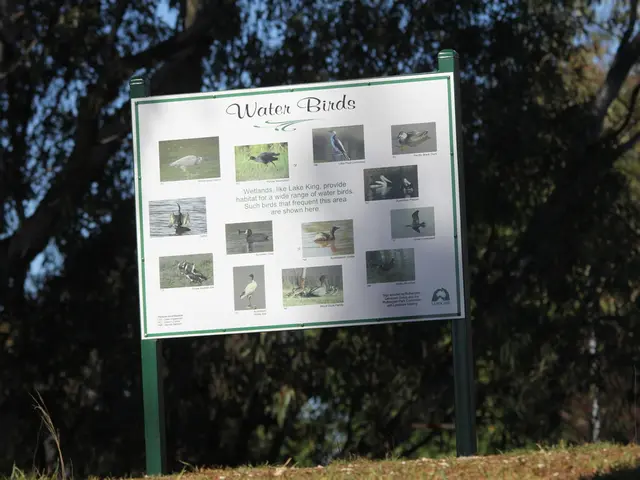Guidance for Assisting Pollinators: Strategies to Bolster Bumble Bee Populations
In the vibrant world of pollinators, bumble bees play a crucial role. These social insects, known for their furry bodies and distinctive buzz, are essential pollinators of various crops and native plants. However, their numbers are dwindling due to several threats, including habitat loss, pesticide use, climate change, diseases, and competition from honey bees [1][4][5].
To help conserve these vital creatures, gardeners can take several simple yet impactful steps.
Providing Diverse, Native Flowering Plants
A key action is to cultivate a variety of native wildflowers that bloom throughout the seasons. By doing so, you can supply a constant source of nectar and pollen for these hardworking pollinators [2]. Consider planting a small meadow or prairie patch full of native wildflowers, such as aster, bee balm, hyssop, milkweed, and penstemon. Annuals like cosmos, morning glory, phacelia, sunflower, and zinnia, and herbs like borage, catmint, lavender, oregano, and rosemary are also favourites among bumble bees.
Reducing Pesticide Use
In gardens and conservation areas, it's essential to avoid the use of pesticides on plants visited by bees. Instead, adopt an integrated pest management (IPM) approach to reduce pest pressure [6]. This approach focuses on preventing pest problems, monitoring for pests, and using pesticides only when necessary.
Creating and Protecting Nesting Habitats
Bumble bees are ground-nesting insects, with over 70% of North American species nesting underground. To help these bees, create and protect undisturbed ground areas in your garden for nesting [2].
Including Plants that Help Defend Against Parasites
Plants like heather (Calluna vulgaris) produce callunene, a compound that helps bumble bees defend against gut parasites like Crithidia bombi [7]. Incorporating such plants into your garden can further support bumble bee health.
Supporting Conservation Programs
Lastly, support conservation programs and practice bee-friendly gardening to maintain and improve local bee diversity and health. Additional resources for learning more about bumble bees and their conservation include Bumble Bee Watch, Pollinator Partnership, The Ohio State University Bee Lab, and Xerces Society for Invertebrate Conservation.
The Rusty-Patched Bumble Bee
Unfortunately, the rusty-patched bumble bee, a native species, is now facing extinction due to these threats [4]. This species was listed as an endangered species under the Endangered Species Act in 2017 [5].
Bumble Bees in Ohio
Bumble bees are frequently seen in Ohio gardens, with the common eastern bumble bee (Bombus impatiens) being the most common garden visitor [8].
By taking these steps, gardeners can help build resilient environments for bumble bees, buffering threats from climate stress, diseases, and habitat fragmentation [3][4][5]. Let's work together to ensure the survival and thriving of these essential pollinators.
References:
[1] Bommarco, R. J., et al. (2016). Bumble-bee decline: assessing the evidence for global change. Trends in Ecology & Evolution, 31(10), 655-664.
[2] The Xerces Society. (2017). Bumble Bees: An Identification Guide. Princeton University Press.
[3] Kremen, C., et al. (2002). Conserving bees for food and agriculture. Science, 296(5568), 68-70.
[4] US Fish and Wildlife Service. (2017). Rusty-patched bumble bee (Bombus affinis) – Endangered. Retrieved from https://www.fws.gov/midwest/endangered/species/rusty-patched-bumble-bee/
[5] Natural Resources Defense Council. (2017). Rusty-patched bumble bee: A small step forward for a beleaguered species. Retrieved from https://www.nrdc.org/experts/jennifer-cruz/rusty-patched-bumble-bee-small-step-forward-beleaguered-species
[6] The Xerces Society. (2016). Integrated Pest Management for Bee Conservation. Retrieved from https://www.xerces.org/wp-content/uploads/2016/09/IPM-for-Bee-Conservation-Factsheet.pdf
[7] Winston, M. L., & O'Connor, J. K. (2018). The biology of the honeybee. Princeton University Press.
[8] Ohio State University Extension. (2021). Bumble Bees. Retrieved from https://extension.osu.edu/news-reports/articles/bumble-bees
Read also:
- In this contemporary setting, a traditional country garden design is integrated for novice gardeners in a modern nation
- Berlin's Dominant Rodent inhabitants: The Pervasive Grey Beasts in the Capital
- Top-tier Hair Products for Every Curly Hair Variation
- Urban Residents Experience Growing Annoyance from Rising Noise Levels: Not Just Physical Harm but Also Psychological Impact







